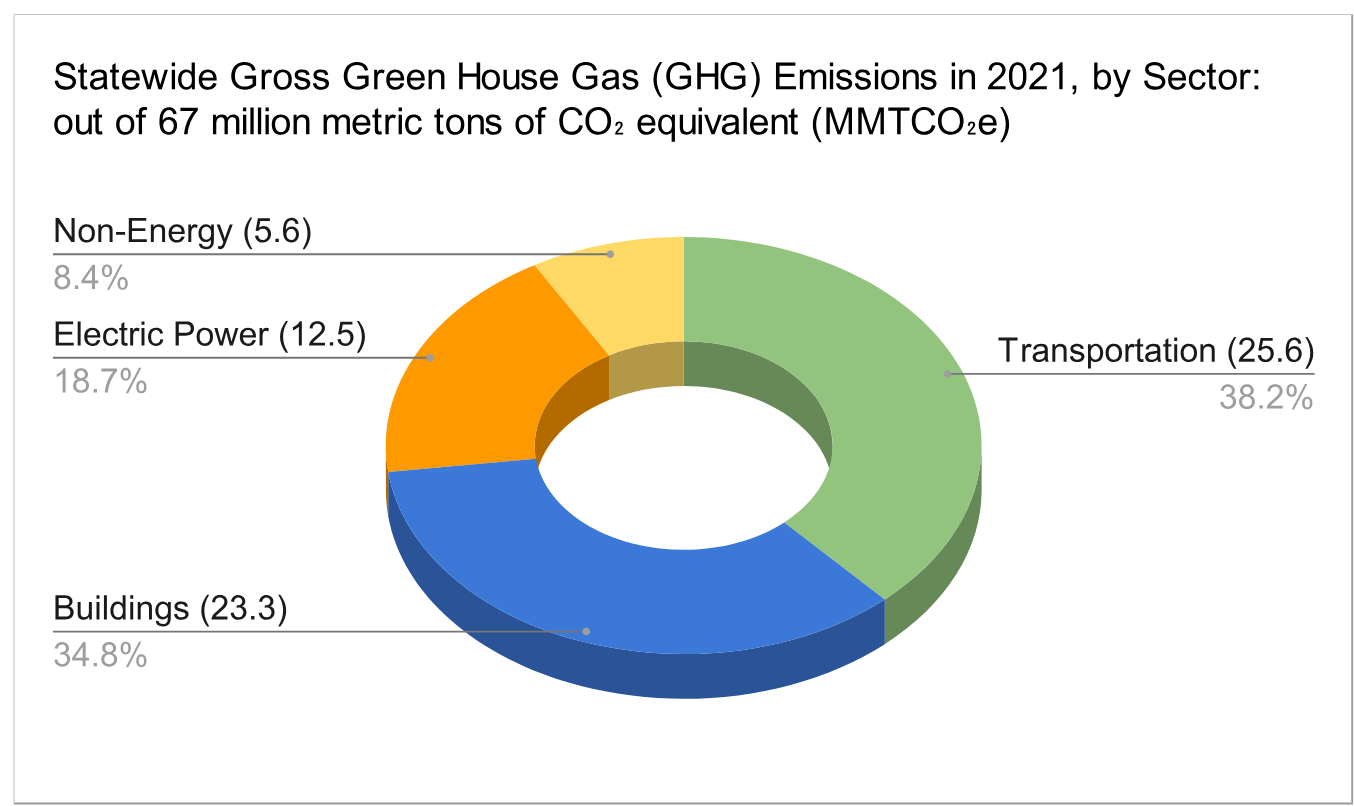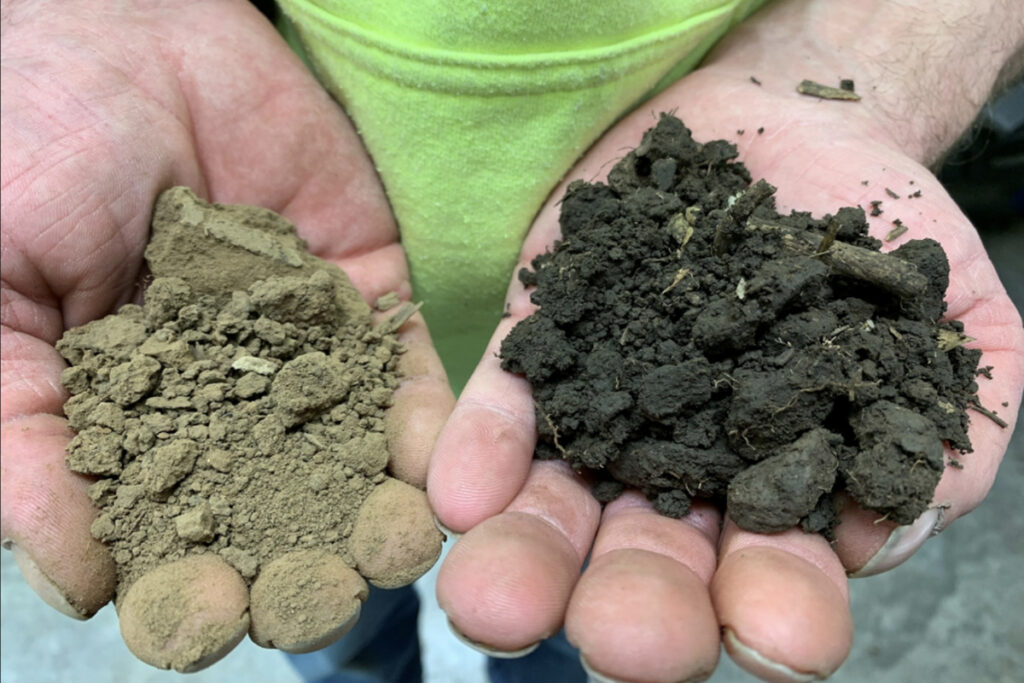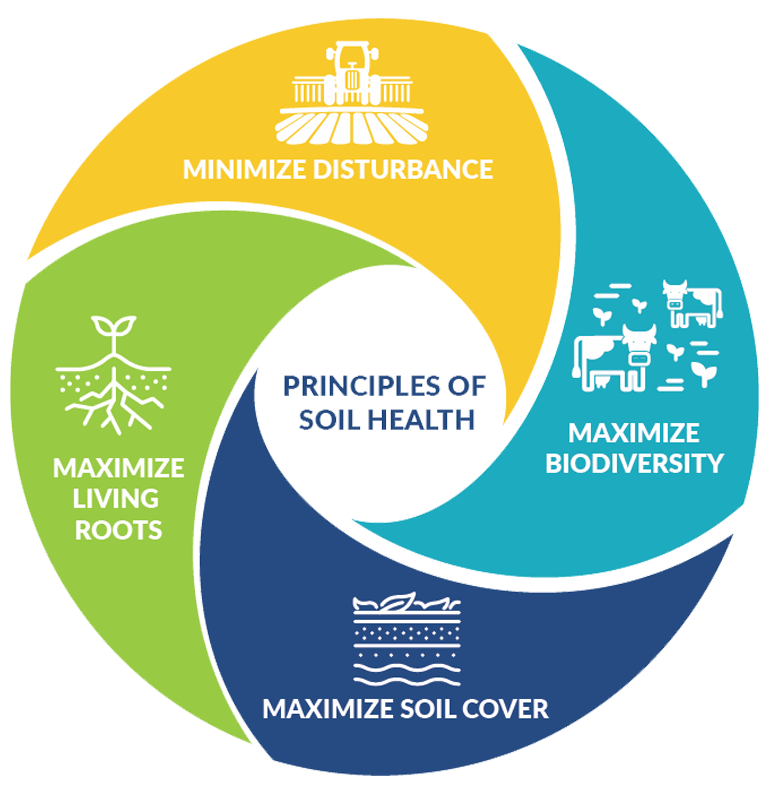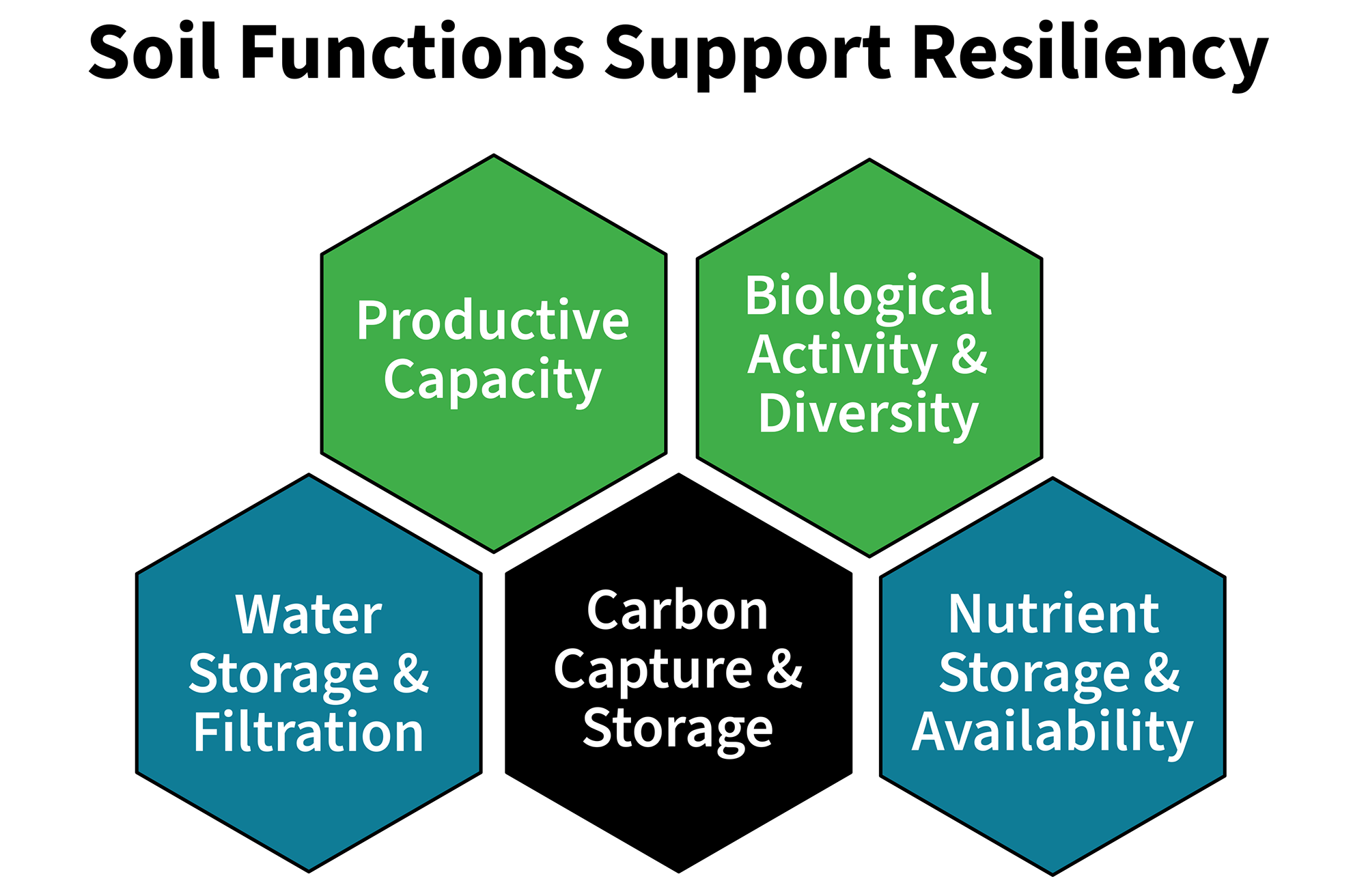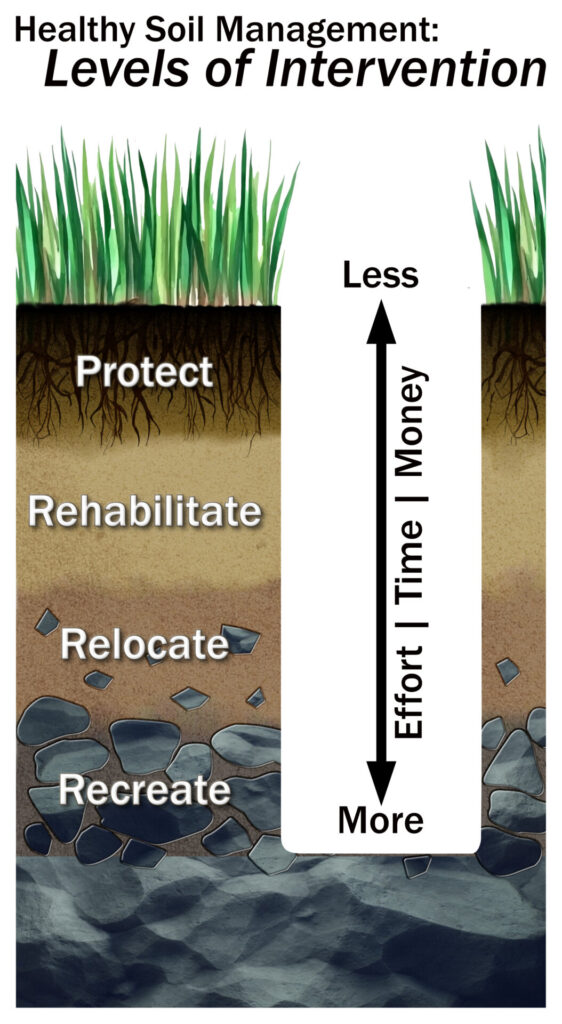Home / Site Design + Construction / Introduction
Highlights
Why Soil Matters
The architecture, engineering, and construction industries have a myriad of opportunities to improve the health, sustainability, and resiliency of the built environment in Massachusetts. The building sector is the second largest source of greenhouse gas emissions in Massachusetts, at 35 percent (OEEA 2022). The Commonwealth’s main building decarbonization strategies hinge on maximizing energy efficiency and transitioning heating from fossil fuels to renewable sources of electricity. The use of high-performance building technologies, tight thermal envelopes, and lower emissions building materials are the main strategies for achieving the ambitious goals set by the Commonwealth’s 2025/2030 Clean Energy and Climate Plan (CECP).
However, these widely accepted strategies to minimize the embodied carbon footprint of development projects overlook a foundational element of the built environment: the soil, the very ground we build on. The way we design and construct buildings and landscapes can impact the overall net carbon emissions of a development more than all the energy, materials, and long-term use combined.
Including healthy soil management practices as part of the overall effort to decarbonize the building sector could prevent unnecessary carbon from being released into the atmosphere and increase long term carbon sequestration and storage capacity in existing and new construction. Limiting soil disturbance and maximizing the Soil Organic Carbon (SOC) sequestration potential is the only way a development site can truly become carbon neutral or a carbon sink. The protection and restoration of healthy, high-functioning soils onsite is an underutilized approach for developers who want to reduce the carbon footprint of the building sector and bring greater coherence to our ability to live and thrive in both urban and rural environments.
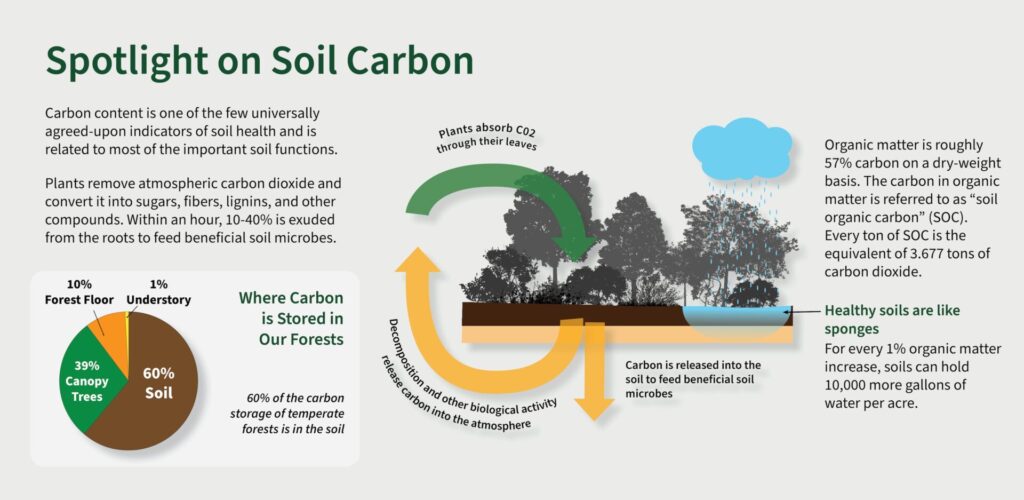
The Benefits of Healthy Soil
Healthy soils increase drought resilience, mitigate flooding, adsorb excess nutrients, filter sediments, decompose pollutants, and moderate peak stream flows and temperatures. Healthy soils also perform important stormwater management functions; they increase water holding capacity and support vigorous plant and tree growth that intercept rainfall, returning much of it to the atmosphere through evaporation and transpiration. Preserving and enhancing healthy soils during the construction process can prevent expensive problems such as poor drainage, nutrient leaching, and erosion from developing later on.
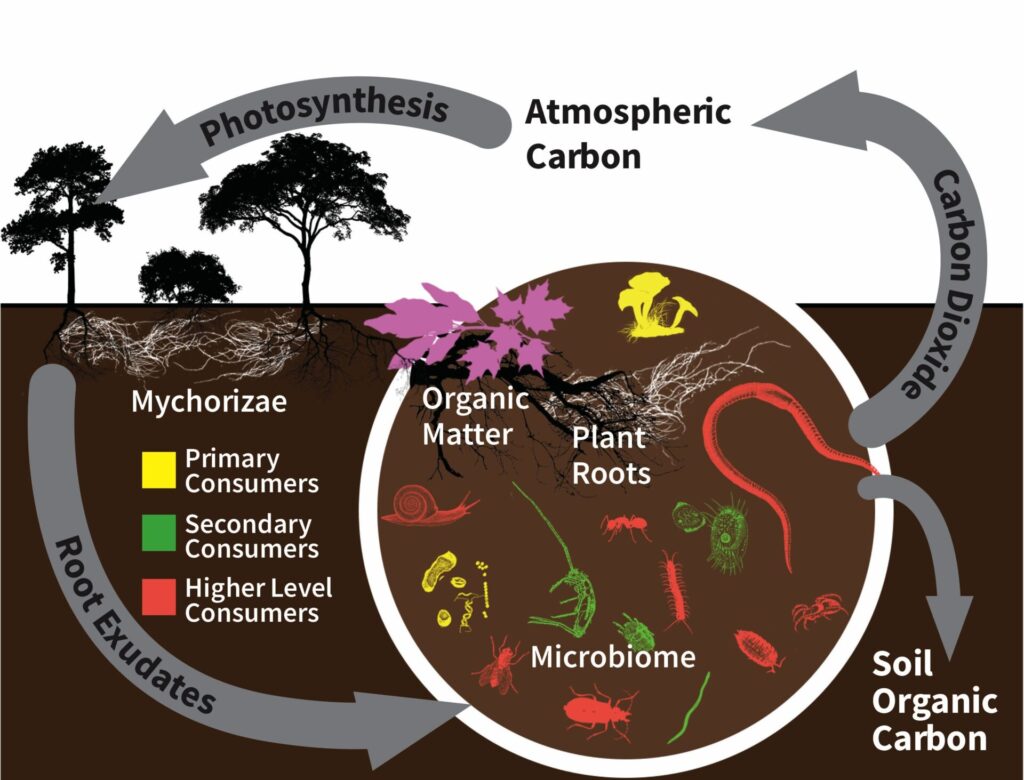
Protecting soils and minimizing soil disturbance should be a primary objective in reducing the embodied carbon footprint of the construction process; however, disturbance cannot be entirely avoided in the built environment. Building and construction is, by nature, a disturbance event that disrupts biological, geological, and chemical cycles in the soil. Disturbance is also a natural and even necessary component of high-functioning ecological systems, not unlike periodic wildfires and earthquakes. With proper planning and a better understanding of healthy soil functions, we can use the necessary disturbance of construction to intervene and improve soil function.
Designing and building “soil-smart” developments means working with the cycles of natural ecosystems and actively situating human activity within the larger story of dynamic ecological processes.
Humans are not only consumers of natural resources, but also catalysts for transformation that can either prevent or fortify the mutual flourishing of life both above and below ground. We have an incredible opportunity at hand to design our built environment to protect, serve, and enhance the natural environment.
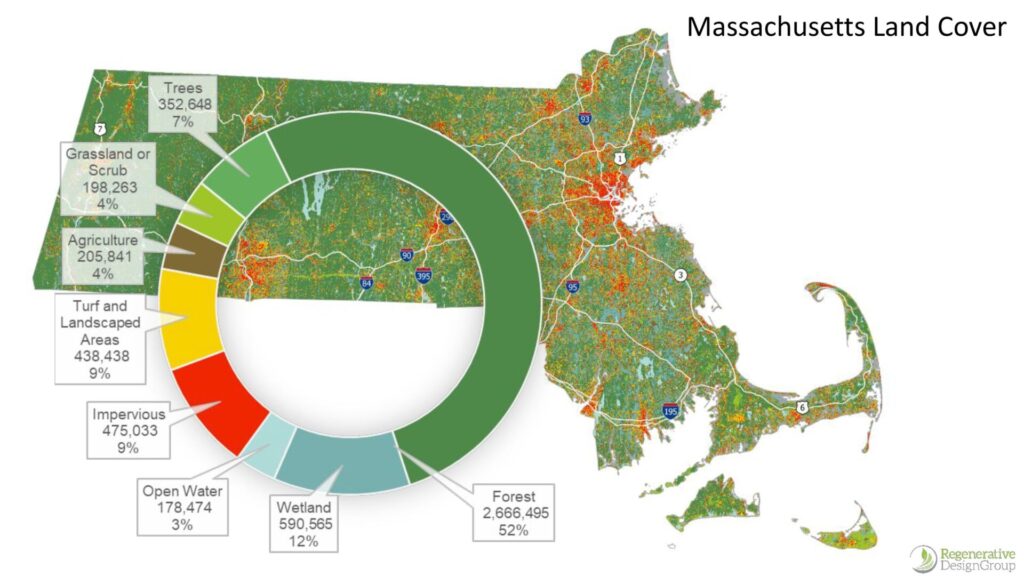
Why This Guide
Over 360,000 additional acres of soil in Massachusetts may be impacted by development over the next 35 years (HSAP 2023). Every time soil is disturbed, SOC is transformed into carbon dioxide and lost back into the air. Every ton of SOC is the equivalent of 3.677 tons of carbon dioxide. Agricultural research is fueling a movement toward no-till agriculture, but this science is just as applicable to the soil disturbance in site development and landscaping services. The difference developers and construction professionals can make is significant: there is roughly twice the amount of land in turf and ornamental landscapes in Massachusetts as agricultural land. Shifts in design and management practices—such as planting 25% of open lawn with trees, and increasing organic matter content in the top 8” of lawns to a minimum of 3%—could sequester an additional ~180,000 tons of carbon dioxide equivalent per year, the same as taking over 38,000 gas-powered passenger vehicles off the road.
There is a wealth of information, guidance, and ongoing research into building healthy soils. Yet, it is not straightforward for those in the building industry to apply them, and soil health is often overlooked in the development process. During final grading, a minimal layer of topsoil may be brought in to cover the site and install aesthetically pleasing vegetation, hiding the damage of disturbance from view. However, the underlying damages to soil health often become visible after the project has been completed in the form of issues such as poor drainage, erosive runoff, and failed plantings that make long-term management difficult and resource-intensive. Poor soil health outcomes are invariably more carbon-intensive as well.
This guide strives to synthesize the most impactful ways to intervene within today’s design and construction practices, and address some of the challenges that design and construction professionals face in integrating healthy soil practices into their work:
This guide aims to bridge these gaps for design and construction professionals by recommending healthy soil standards and specifications, along with recommended best management practices from a variety of disciplines in plain language for professionals across the construction industry.
The Massachusetts Healthy Soils Guide was produced by Regenerative Design Group in partnership with Linnean Solutions, BSC Group, and Sasaki, and funded by the Massachusetts Healthy Soils Challenge Grant through the Executive Office of Energy and Environmental Affairs (EEA). It is published in print and in digital format to ensure it stays up-to-date and accessible to a wide range of users, who will help raise the profile of soil health and the enormous untapped potential of optimizing healthy soil functions throughout the design and construction process.
Establishing “Soil-Smart” Project Goals
What is possible when it comes to protecting, managing, and enhancing soil health and function? What is a “soil-smart” design, and how can planners, designers, and contractors all work together to use “soil-smart” practices that prioritize healthy soil outcomes?
Soil Smart Design + Construction:
There are several ways to approach the goal of protecting and enhancing soil in the built environment. Establishing soil health goals will help to clearly articulate the rationale behind implementing new and perhaps unfamiliar soil management techniques.
Thinking through these overall goals at the beginning of each project will help to guide the other decisions made throughout the construction process. Asking some of the following questions can help to create a basic framework for approaching each project with soil health in mind:
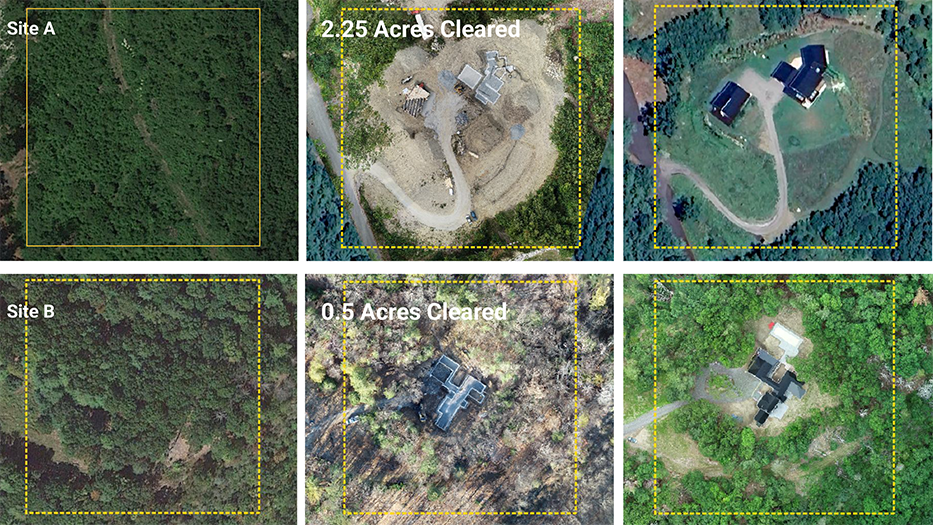
How To Use This Guide
The Healthy Soils Guide provides a roadmap for designing and implementing “soil-smart” practices that optimize healthy soil functions for productive, resilient, carbon-rich, thriving landscapes. This guide can be used by professionals, homeowners, and concerned citizens to improve industry standards across the board when it comes to protecting and enhancing Massachusetts soils. The sections are organized in chronological order, beginning with the design process and moving through onsite and final grading practices, including soil specifications and amendments. Additionally, each section is designed to stand on its own, and can be referenced as needed.
The following steps will aid you in using this guide for ‘soil smart’ development:
WHO: The Actors
This guide is written for site development professionals, including but not limited to general contractors and subcontractors, architects and landscape architects, designers, planners, developers, regulators, and civil, environmental and structural engineers. The information in this guide can also be used by homeowners who are hiring any of the above professionals or doing their own design, landscaping or construction work.
In most development projects, there is a high level of overlapping expertise and influence over decisions. A landscape architect can contractually protect soils by specifying a Limit of Work and Critical Root Zones in the construction documents; however, in their absence, the general contractor may also establish them onsite. An architect may work together with both a landscape architect and civil and environmental engineers to site the building and design the foundation, which has direct repercussions on soil health. A general contractor has control over the means and methods of construction, which can impact soil health outcomes over the entire site. As more professionals become familiar with strategies to protect and improve soil health, implementing healthy soil BMPs will become easier and more straightforward.
WHAT: Soil Functions
The soils and landcovers on every site are unique. Soil texture, parent material, climate, historical land use, and vegetation greatly impact aspects of soil formation, nutrient availability, and biological activity. Soil health is determined by a soil’s capacity to operate as a dynamic, living system that maintains essential environmental and ecological functions. For this reason, a ‘healthy’ soil found in one geographic area can be composed of completely different “ingredients” than a ‘healthy soil’ found in another area.
There are five main soil functions that can be used to assess soil health and are referenced throughout this guide:
Not all landscapes can, nor necessarily ought to, maximize every soil function. Whether defining soil specifications for construction projects, or installing ornamental landscapes post-construction, it is important to understand both the functionality of the soil prior to development, as well as the desired soil functions post-development in order for the construction process to produce the best possible soil function outcomes on impacted soils.
WHERE: Landscape Types
The Healthy Soils Guide aims to provide recommendations for achieving healthier soil functions in a diversity of settings. The chart below compares typical healthy soil functions within several different landscape types.
A “high-functioning” soil across all five functions is relatively rare. Different landscape types naturally have different constraints and may be limited in their functions or capabilities. For example, typical lawns have fibrous, mat-forming root systems that do not penetrate deeply into the soil horizons. Therefore, their ability to store carbon is limited, but with the right soil conditions, they can be a place of high water filtration and storage capacity.
Landscape Type | Carbon Capture and Storage | Nutrient Storage and Availability | Water Infiltration, Capacity and Filtration | Productive Capacity | Biologic Activity |
|---|---|---|---|---|---|
Cultivated Areas: | |||||
Ornamental + Recreational Lawns | Medium | Medium | Medium | Medium | Low |
Gardens | Medium | Medium | Medium | Medium | Medium |
Farmland | Medium | High | Medium | High | Low |
Environmental Services: | |||||
Green Infrastructure | Medium | Low | High | Medium | Medium |
High | High | High | High | High | |
Natural Landscapes: | |||||
Northeastern Meadow + Shrubland | High | Medium | High | High | High |
Reforestation | High | High | High | High | High |
Very High | Very High | Very High | Very High | Very High | |
Protected Soils | Varies by Context | Varies by Context | Varies by Context | Varies by Context | Varies by Context |
WHEN: The Design/Build Process
A typical construction project follows a general order of phases, such as:
(1) Site Selection + Analysis ⟶ (2) Design + Permitting ⟶ (3) Site Prep ⟶ (4) Excavation ⟶ (5) Foundation + Hardscaping ⟶ (6) Final Grading + Planting⟶ (7) Maintenance
Although the sections in this guide are organized chronologically, as in a typical project timeline, knowing the desired final outcome will better inform planning and design. In the interdisciplinary fields of design and construction, the more each actor understands the implications that each phase has for soil health, the better they will be able to collaborate.
Guide Sections
- Introduction
- Soil Primer + Assessment Toolkit
- Site Analysis + Planning: Soil Smart Designs
- Specifying Amended + Blended Soils
- Managing Soils Onsite
- Land Management + Maintenance
HOW: Levels of Intervention
Every project impacts the soils on a construction site to some degree. The goal of this Healthy Soils Guide is to offer guidance for soil management strategies that minimize negative soil outcomes such as erosion and compaction while maximizing the potential of the soil to recover quickly from disturbance, and if possible, improve upon the initial conditions long term as part of an overall “soil-smart” approach to development.
A “soil-smart” project may utilize several different soil management strategies on the same site to achieve the highest overall standards of soil health, both during and after construction. These strategies can also be considered as varying levels of intervention, from low cost/low intervention (protect) to high cost/high intervention (recreate). The four main strategies used in this guide are:
- Protect sensitive and valuable areas from impact
- Rehabilitate soils for better ecological function
- Relocate soils that will be disturbed by construction using best management practices
- Recreate soils using offsite mixes and amendments to add to, alter, or replace removed or compromised soils.
The planning and design phases are the best times to communicate and make decisions about soil management that will ensure optimal soil function outcomes with the lowest costs to developers. Recommended actions or BMPs to achieve these soil management strategies can then be implemented by the rest of the construction team with clarity, efficacy, and efficiency.
